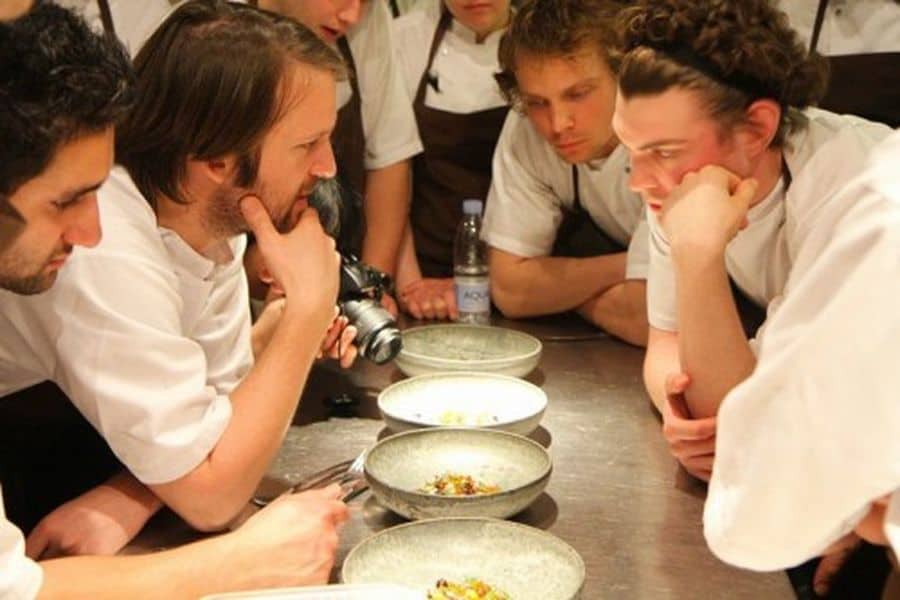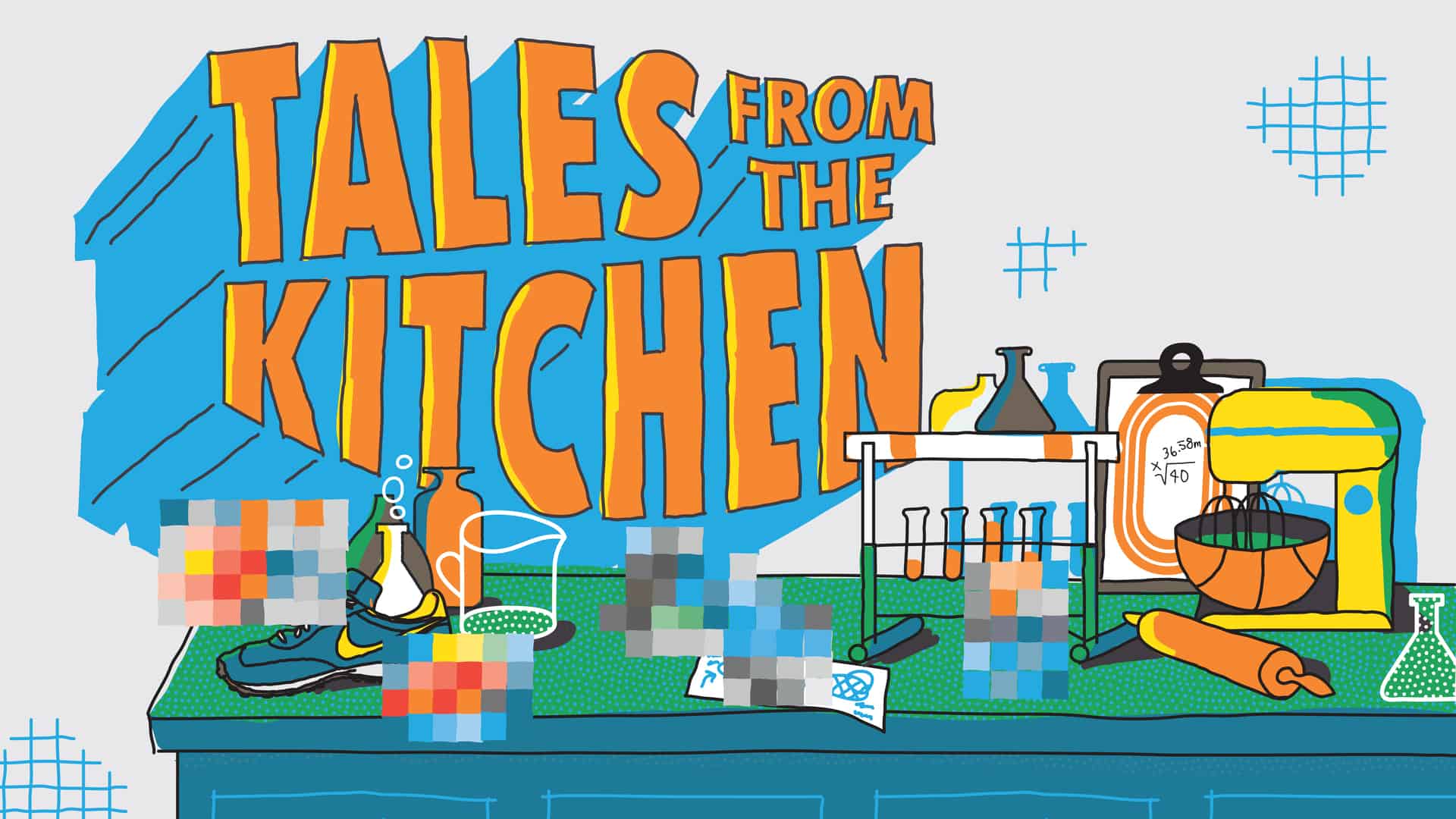Last week, in an effort to feed the Netflix monkey on my back and having already exhausted so many of Netflix’s great original series, my wife and I stumbled upon a true gem. As a foodie, I’m fascinated by the creative process that takes place in the kitchen and was blown away by Noma: My Perfect  Storm. The documentary offers a unique peek into the internationally recognized Danish restaurant, Noma, its head chef Rene Redzepi, and the inner workings of a restaurant that has been voted #1 in the world for 4 years since 2010. It wasn’t that the movie was great (it was), or that the food looked amazing (it did), or that watching this film with my wife has cost me a future unknown fortune as she was insistent on a promise to take her there one day (the downside of Netflix and chill) that caught my interest. What was interesting was how Rene had developed and implemented a systemic approach to a culture of constant innovation and accountability.
Storm. The documentary offers a unique peek into the internationally recognized Danish restaurant, Noma, its head chef Rene Redzepi, and the inner workings of a restaurant that has been voted #1 in the world for 4 years since 2010. It wasn’t that the movie was great (it was), or that the food looked amazing (it did), or that watching this film with my wife has cost me a future unknown fortune as she was insistent on a promise to take her there one day (the downside of Netflix and chill) that caught my interest. What was interesting was how Rene had developed and implemented a systemic approach to a culture of constant innovation and accountability.
At Noma, on Saturday nights, after 80-hour workweeks, and into the wee hours of the night (after 2am), the hustle and bustle in their kitchen doesn’t seem to die down. You don’t see chefs and kitchen staff wandering out into the night looking for a drink to calm the nerves of a high-intensity night. Instead, eager and weary chefs gather for what has become a sacred  ceremony, Saturday Night Projects. At Saturday Night Projects one chef from each station in the kitchen is responsible for creating something new, a snack, a dish, an ingredient, or an idea, it really doesn’t matter as long as it is new, true to the chef, and pushes the limits of their current reality. (oh and that it uses regionally specific Nordic ingredients which can be a problem as his chefs come from all over the world).
ceremony, Saturday Night Projects. At Saturday Night Projects one chef from each station in the kitchen is responsible for creating something new, a snack, a dish, an ingredient, or an idea, it really doesn’t matter as long as it is new, true to the chef, and pushes the limits of their current reality. (oh and that it uses regionally specific Nordic ingredients which can be a problem as his chefs come from all over the world).
This process has opened the door for new and exciting food that consistently places Noma at the top of the restaurant charts year in and year out. Creating a process that fosters creativity isn’t easy. If you look at the Saturday Night Projects now vs. what it was at its inception you wouldn’t recognize it because it’s changed quite a bit. So, what is the secret to Noma’s success? Well, in traditional Creative Ventures format I’ll break it down for you in three parts:
- Budget time for creativity: You have to intentionally etch out time in your schedule for innovation. Noma isn’t the only great example of creating a specific time for innovation, Google does a pretty good job too. They allow their employees to have one day a week dedicated to idea development, which has led to the success they have had with Google Maps, Gmail, and Froogle. Or look at 3M, arguably the most consistent innovator in business. They mandate that 15% of all engineers and scientists time is spent on a project that interests them, effectively giving them permission to be creative and harness their passions. It doesn’t matter whose model you follow, just that you create an environment that fosters innovation.
- Find the right fit for you: When Saturday Night Projects started each chef in the kitchen had to present something. Rene figured out rather quickly that having that many people create and present at the same time wasn’t an effective use of his time. What did he do? Quit? No, he adapted. He tweaked the model until it fit his restaurant and his staff. The lesson here is that if it doesn’t work at first it doesn’t mean that you should abandon the idea. Work on it until it not only meshes with your business and culture but also has some success.
- Repeat
What’s great about all of this is how Noma handles prototyping. We have preached in previous blogs and newsletters the importance of the prototype. We at Creative Ventures have experimented with our own models of innovation until we finally found the right fit for us. If you decide to make a  commitment to a culture of innovation you have to be prepared for the outcome, new ideas! Having a new idea is great but how do you share, test, and ultimately have success with launching something new? Over the years we’ve stolen some great ideas from companies who do this very well (yes its ok to steal good ideas, just ask Austin Kleon or read his book Steal Like an Artist) and have created a system we teach and share with our clients across the country.
commitment to a culture of innovation you have to be prepared for the outcome, new ideas! Having a new idea is great but how do you share, test, and ultimately have success with launching something new? Over the years we’ve stolen some great ideas from companies who do this very well (yes its ok to steal good ideas, just ask Austin Kleon or read his book Steal Like an Artist) and have created a system we teach and share with our clients across the country.
Step One: Be Quick to Prototype – Take advantage of the energy that exists around a new project. Push your team to get something to the table. The prototype is just that, a prototype. Don’t waste time trying to perfect your idea, product, or process in this phase. Just create something. Refining it comes later.
Step Two: Prototype to Market – This can be the most tricky aspect of this whole process. How do you test your prototype? Do you test it internally? Do you test it on existing clients? There are a multitude of options for you to explore and find out what works best for your business but if you’re looking for great  example check out Nikes Innovation Kitchen. At their innovation facilities in they have the great benefit of mitigating the risk that comes along with new products by testing their gear on their sponsored athletes. Why is this great beyond having experts critique every aspect their product? It insulates them from the risk associated with consumer testing. Whatever model works best for your business make sure to capture all of the feedback.
example check out Nikes Innovation Kitchen. At their innovation facilities in they have the great benefit of mitigating the risk that comes along with new products by testing their gear on their sponsored athletes. Why is this great beyond having experts critique every aspect their product? It insulates them from the risk associated with consumer testing. Whatever model works best for your business make sure to capture all of the feedback.
Step Three: Final Product Launch – Take all of that feedback, analyze it, and implement changes. Make all the final adjustments needed, create a marketing and sales strategy, and execute.
Your business might be running smoothly today. Hell, it may continue to run smoothly for the next twelve months. But, a strategy that omits a commitment to growth and innovation leads to business stagnation. Whether you find inspiration from Noma, Nike, 3M, or some other innovator, what’s important is embracing and implementing your own innovation model. Commit to a process and hold your team accountable to its application. If you find yourself struggling in this endeavor, give us a call. We’d be happy to help.



Leave a Reply